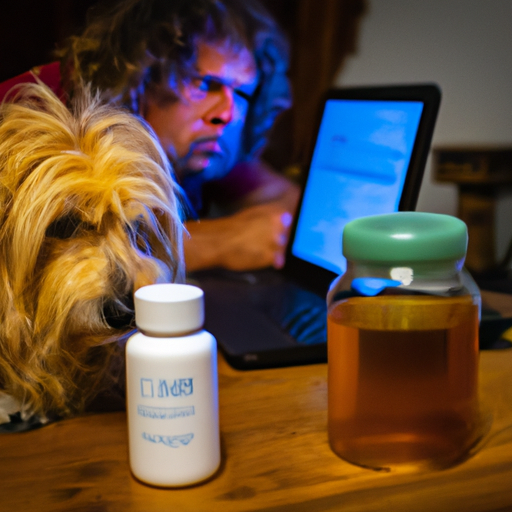As a pet owner, you know that the health of your furry friend is paramount. One common question that many dog owners struggle with is how often their dogs can get Benadryl? The answer to this question isn’t that straightforward, since it relies on various factors such as your dog’s weight, health status, and the reason behind the medication. Let’s explore this topic in more detail to provide you with a comprehensive understanding.
Contents
- Understanding Benadryl
- When to Give Your Dog Benadryl
- Dosage and Frequency
- Side Effects of Benadryl
- Alternatives to Benadryl
- Frequently Asked Questions
Key Takeaways
- Benadryl is an over-the-counter medication that can help alleviate symptoms of allergies, motion sickness, and anxiety in dogs.
- It’s crucial to consult your vet before administering Benadryl to your dog.
- Always use the correct dosage based on your pet’s weight and health condition.
- Overdosing can lead to severe side effects, including hyper-excitability and heart failure.
- Natural alternatives to Benadryl may be a safer option for managing mild symptoms.
Understanding Benadryl
Benadryl, also known as diphenhydramine, is an antihistamine commonly used to alleviate symptoms of allergies in humans. However, it can also provide relief for dogs suffering from allergies, travel sickness, or anxiety.
Although Benadryl is safe for dogs, it’s crucial to use the correct dosage to avoid potential adverse effects. It’s always recommended to consult with your vet before starting any new medication, including over-the-counter drugs like Benadryl. For more information on dog health and medication, visit onetopdog.com.
When to Give Your Dog Benadryl
Benadryl can be given to dogs to help with a variety of conditions, such as:
- Allergic reactions: If your dog is suffering from an allergic reaction, Benadryl can help alleviate symptoms like itching, swelling, and hives.
- Motion sickness: Dogs that get car sick can benefit from Benadryl, as it can alleviate motion sickness symptoms.
- Anxiety: Benadryl can also help to reduce anxiety in dogs, such as anxiety caused by fireworks or thunderstorms.
Dosage and Frequency
The general rule of thumb is to give your dog 1 milligram of Benadryl for every pound they weigh. This dosage can be administered every 8 to 12 hours, or about two to three times a day.
For example, if you have a 30-pound dog, you may give them 30 milligrams of Benadryl every 8 to 12 hours. However, these are general guidelines, and it’s always best to consult with your vet for an accurate dosage.
Side Effects of Benadryl
While Benadryl is generally safe for dogs, it can have some side effects, such as:
- Dry mouth
- Urinary retention
- Increased heart rate
- Rapid breathing
- Drowsiness or sedation
In severe cases, an overdose can lead to hyper-excitability, heart failure, and even death. Hence, it’s essential to monitor your dog closely after administering Benadryl.
Alternatives to Benadryl
While Benadryl can be effective, you might want to consider some natural alternatives if your dog suffers from mild symptoms. These include:
- Chamomile: This herb has calming properties that can help to reduce anxiety in dogs.
- Ginger: Ginger can help to alleviate symptoms of motion sickness.
- Oatmeal baths: These can help to soothe itchy skin caused by allergies.
For more advice on natural remedies for dogs, you can visit onetopdog.com.
Frequently Asked Questions
1. Can I give my dog Benadryl to sleep?
While Benadryl can cause drowsiness in dogs, it should not be used as a sleep aid. Consult your vet if your dog has trouble sleeping.
2. How often can I give my dog Benadryl for allergies?
In general, Benadryl can be given to dogs every 8 to 12 hours, or two to three times a day. However, long-term use should be discussed with your vet.
3. Can puppies have Benadryl?
It’s generally not recommended to give puppies Benadryl without consulting a vet first. Puppies are more sensitive to medications, so it’s best to consult with a professional.
To sum up, while Benadryl can be a helpful tool for managing various symptoms in your dog, it’s crucial to use it responsibly. Always consult with your vet before starting any new medication, and monitor your dog for any potential side effects. For more information on dog health, check out this resource.



